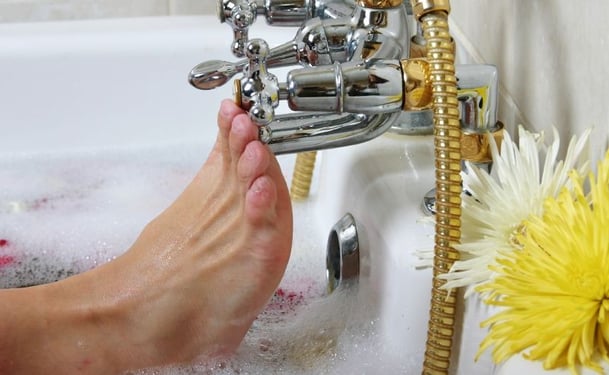Do your varicose veins look or feel worse on a hot summer’s day or after taking a hot bath? If so, it might be time to rethink activities that involve excessive amounts of heat. There are also ways that you can minimize the effects of hot weather on your symptoms.
How heat affects varicose vein symptoms
Excessive heat, like the kind you might find in a hot tub or even a hot bath, doesn’t cause varicose veins. However, it can aggravate existing varicose veins.
When you sit in a hot tub or go outside on a hot day, your body responds by causing the blood vessels to become wider (dilate). This brings more blood, fluids and salt to your skin, which encourages sweating that cools off your body.
Varicose veins occur when the valves in the veins are weak or damaged. This causes blood to back up—or pool—in your veins, leading to the swollen appearance of varicose veins.
When your body is hot, the increased blood flow in the blood vessels may increase the pooling of blood in the varicose veins. This can worsen your symptoms, including:
- Swelling of the veins just under the surface of the skin in your legs
- Swelling of your ankles and feet
- Painful or achy legs
- Cramping or throbbing in your legs
- Itchy legs, especially on the ankle and lower leg
- Discoloration of the skin near the varicose vein
Some people may also experience worse symptoms when they are outside on sunny days. Exposure to sunlight, though, doesn’t cause worsening of these symptoms. Instead, it is the heat of summer.
Avoiding heat-related vein symptoms
Heat will not cause everyone’s varicose vein symptoms to worsen. However, the chance that heat will bother you increases with hotter temperatures and spending more time in the heat.
If you have varicose veins, you may want to be cautious with the following until you know how your body reacts to heat:
- Sitting for a long time in hot water, including baths, hot tubs or Jacuzzis
- Hot showers, especially at hotter temperatures
- Underfloor heating and excessive room heating in the winter
- Sitting close to a heat source, such as a fireplace, campfire, wood stove or heating vent
- Applying heat packs to the legs near the varicose veins
Hot weather in the summer, and while on vacation in the winter, may also increase your varicose vein symptoms. If you can’t avoid the heat—by staying in air conditioning—you can try other ways to relieve your symptoms, such as:
- Elevating your legs
- Wearing compression stockings
- Avoiding standing for long periods
- Avoid crossing your legs, which may impact blood flow
- Not exercising outside during hot weather
Causes of varicose veins
It’s important to remember that heat does not cause varicose veins, although it can worsen the symptoms. Many factors increase your risk of developing varicose veins, including:
- Family history of varicose veins
- Older age
- Gender: women are more likely than men to develop varicose veins
- Pregnancy
- Being overweight or obese
- Sitting or standing for long periods
If your varicose vein symptoms worsen, or you are concerned about the appearance of your legs, a vein specialist can talk to you about your treatment options.
Updated Aug. 29, 2017


